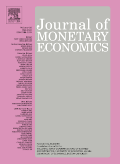
Journal of Monetary Economics
Volume 120, May 2021, Pages 70-82
Information Frictions, Monetary Policy, and the Paradox of Price Flexibility
Shengliang Ou ab Donghai Zhang c RenbinZhang d
a Institute for Advanced Research, Shanghai University of Finance and Economics, Shanghai, 200433, China
b Key Laboratory of Mathematical Economics (SUFE), Ministry of Education, Shanghai, 200433, China
c Institute for Macroeconomics and Econometrics, University of Bonn, Adenauerallee, 53113, Germany
d School of Economics, Shandong University, Jinan, 250100, China
The introduction of digital price tags and e-commerce facilitates the implementation of price adjustments and thereby diminishes the degree of nominal rigidity in an economy. Is this phenomenon welfare-improving? We address this question using a multi-sector New Keynesian model with information frictions and dispersed beliefs. Increased price flexibility may decrease welfare through the dispersed belief channel and the amplified spillover effects. Dispersed beliefs create a novel channel through which the welfare cost of inflation in a sector increases with price flexibility, altering the optimal inflation index stabilization policy. A monetary policy that stabilizes the optimal inflation index mitigates this paradox.
